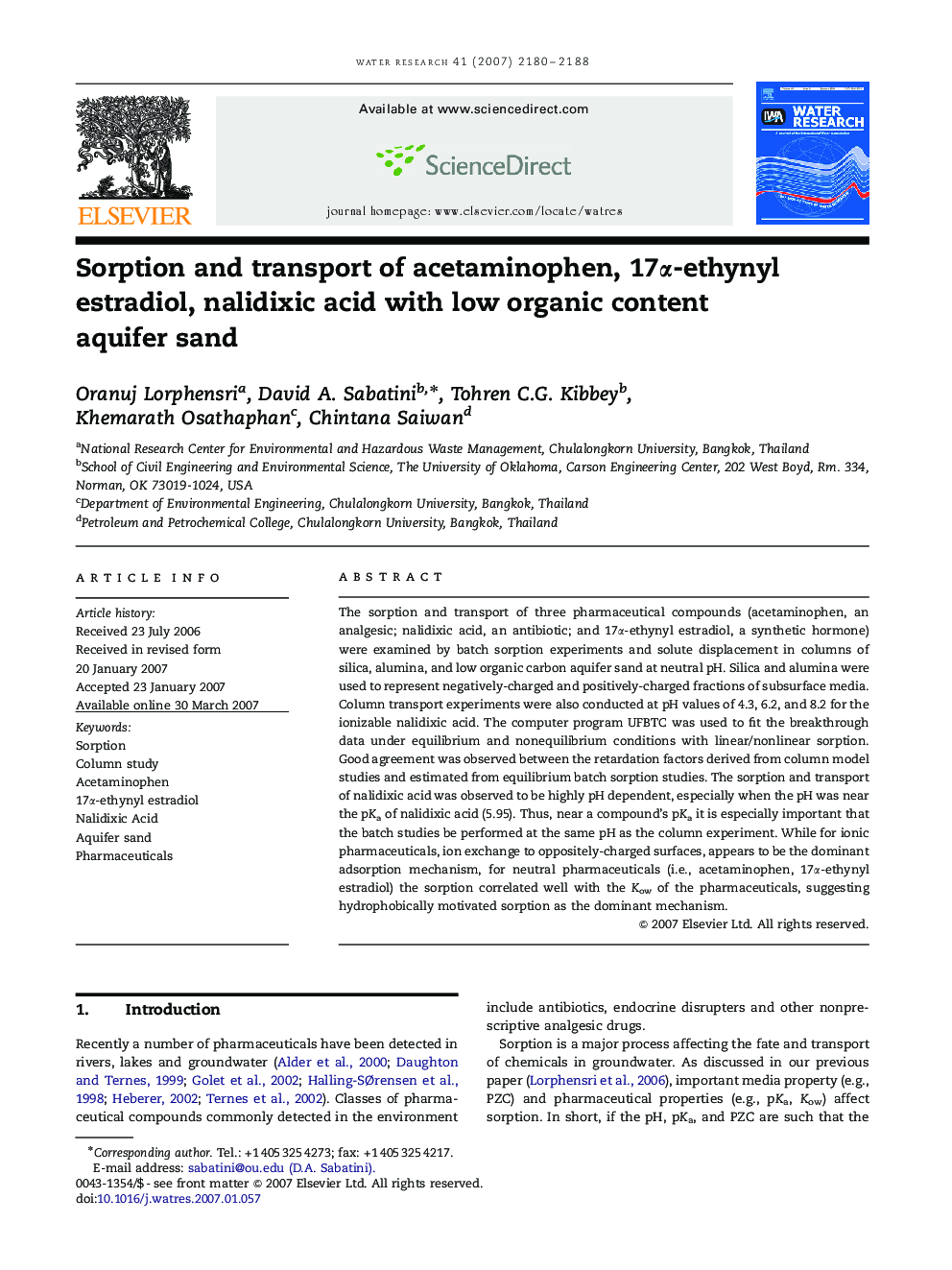| Article ID | Journal | Published Year | Pages | File Type |
|---|---|---|---|---|
| 4486292 | Water Research | 2007 | 9 Pages |
The sorption and transport of three pharmaceutical compounds (acetaminophen, an analgesic; nalidixic acid, an antibiotic; and 17α-ethynyl estradiol, a synthetic hormone) were examined by batch sorption experiments and solute displacement in columns of silica, alumina, and low organic carbon aquifer sand at neutral pH. Silica and alumina were used to represent negatively-charged and positively-charged fractions of subsurface media. Column transport experiments were also conducted at pH values of 4.3, 6.2, and 8.2 for the ionizable nalidixic acid. The computer program UFBTC was used to fit the breakthrough data under equilibrium and nonequilibrium conditions with linear/nonlinear sorption. Good agreement was observed between the retardation factors derived from column model studies and estimated from equilibrium batch sorption studies. The sorption and transport of nalidixic acid was observed to be highly pH dependent, especially when the pH was near the pKa of nalidixic acid (5.95). Thus, near a compound's pKa it is especially important that the batch studies be performed at the same pH as the column experiment. While for ionic pharmaceuticals, ion exchange to oppositely-charged surfaces, appears to be the dominant adsorption mechanism, for neutral pharmaceuticals (i.e., acetaminophen, 17α-ethynyl estradiol) the sorption correlated well with the Kow of the pharmaceuticals, suggesting hydrophobically motivated sorption as the dominant mechanism.
